
Name: Baer's Pochard
Scientific name: Aythya baeri
Conservation status: IUCN - Critically Endangered, CMS - Appendix I
Baer’s Pochard is a poorly known migratory diving duck endemic to the East Asian - Australasian Flyway (EAAF). It was uplisted to Critically Endangered on the IUCN Red List in 2012. A Species Action Plan was developed in 2014 and adopted by EAAFP at MOP8 in 2015.
Identification
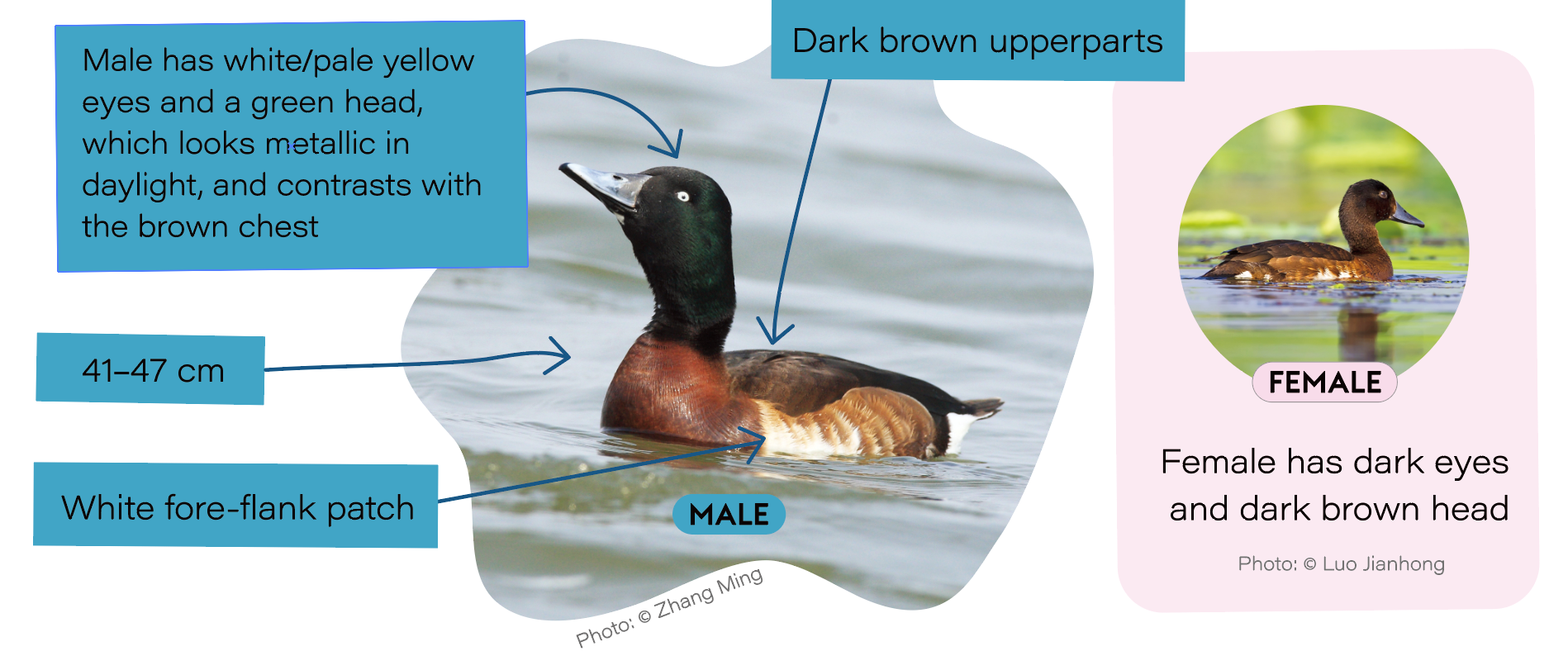
Baer’s Pochard is 41-47cm in length. They have white fore-flank patch and grey legs with webbed feet.
Adult males are wide-bodied and have a rounded dark-green head, which looks metallic in daylight, contrasts with the brown breast, dark-brown upperparts. It has white fore-flank patch, and white/pale yellow eyes.
Females are of a duller colour than their male counterparts, with darker eyes and a dark brown head instead of the glossy green head.
Click [here] to learn more about identification of Baer’s Pochard.
Distribution range
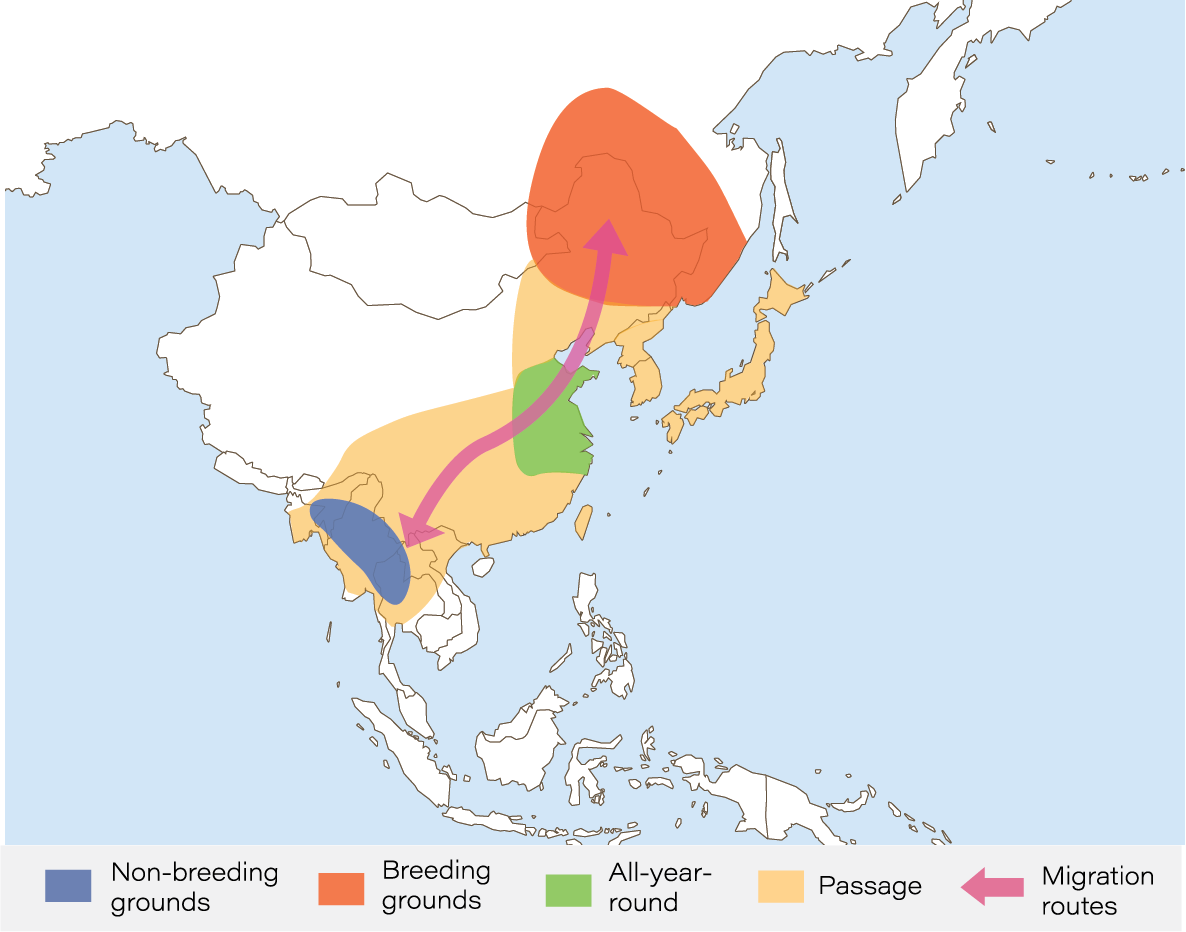
*This map was produced by EAAFP Baer’s Pochard Task Force and EAAFP Secretariat.
Breeding grounds: breeds in south-eastern Russia, north-eastern China, and possibly in Mongolia and DPR Korea
Passage or in winter (or as a vagrant): Mongolia, Japan, DPR Korea, RO Korea, China, Pakistan, India, Nepal, Bhutan, Bangladesh, Myanmar, Thailand, Vietnam and the Philippines.
Wintering grounds: eastern and southern China, Bangladesh, Thailand and Myanmar, and possibly north-eastern India.
Habitat
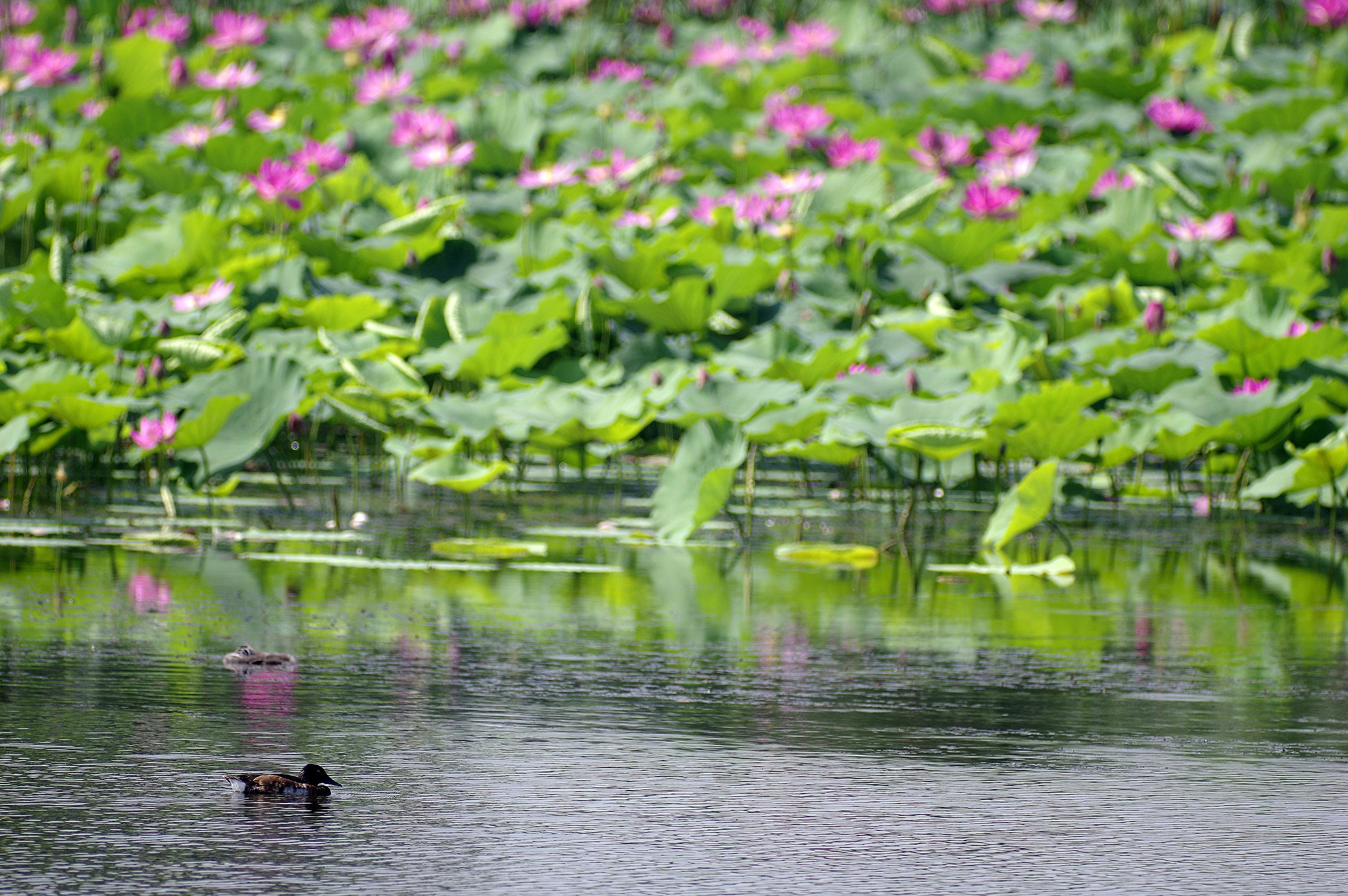
© Jia Yifei
Well-vegetated freshwater bodies like lakes, ponds, reservoirs fishponds, and slow-flowing rivers and coastal wetlands with dense vegetation. The birds use rice fields in autumn before migration. In winter, they use larger freshwater waterbodies, occasionally making use of brackish lagoons, estuaries, and reservoirs.
Population estimate
Less than 1,000 individuals, with 150 to 700 mature individuals.
Main threats
Mainly by habitat loss and habitat degradation resulting from drainage of wetlands for agriculture, also from unsustainable harvesting of young birds and eggs; human disturbance and recreation, bycatch in fishing nets; and pollution.
How you can help
- There is a lack of knowledge about the species, such as distribution sites and the factors causing its decline, support us to do studies, surveys, report sighting of the species and record the sites.
- Sustainable management of the sites where Baer’s Pochard uses.
- Help to promote the conservation of Baer’s Pochard.
- Learn more about work of EAAFP Baer’s Pochard Task Force.
- Donate and support EAAFP’s work.
Learn more about Baer’s Pochard
Factsheet
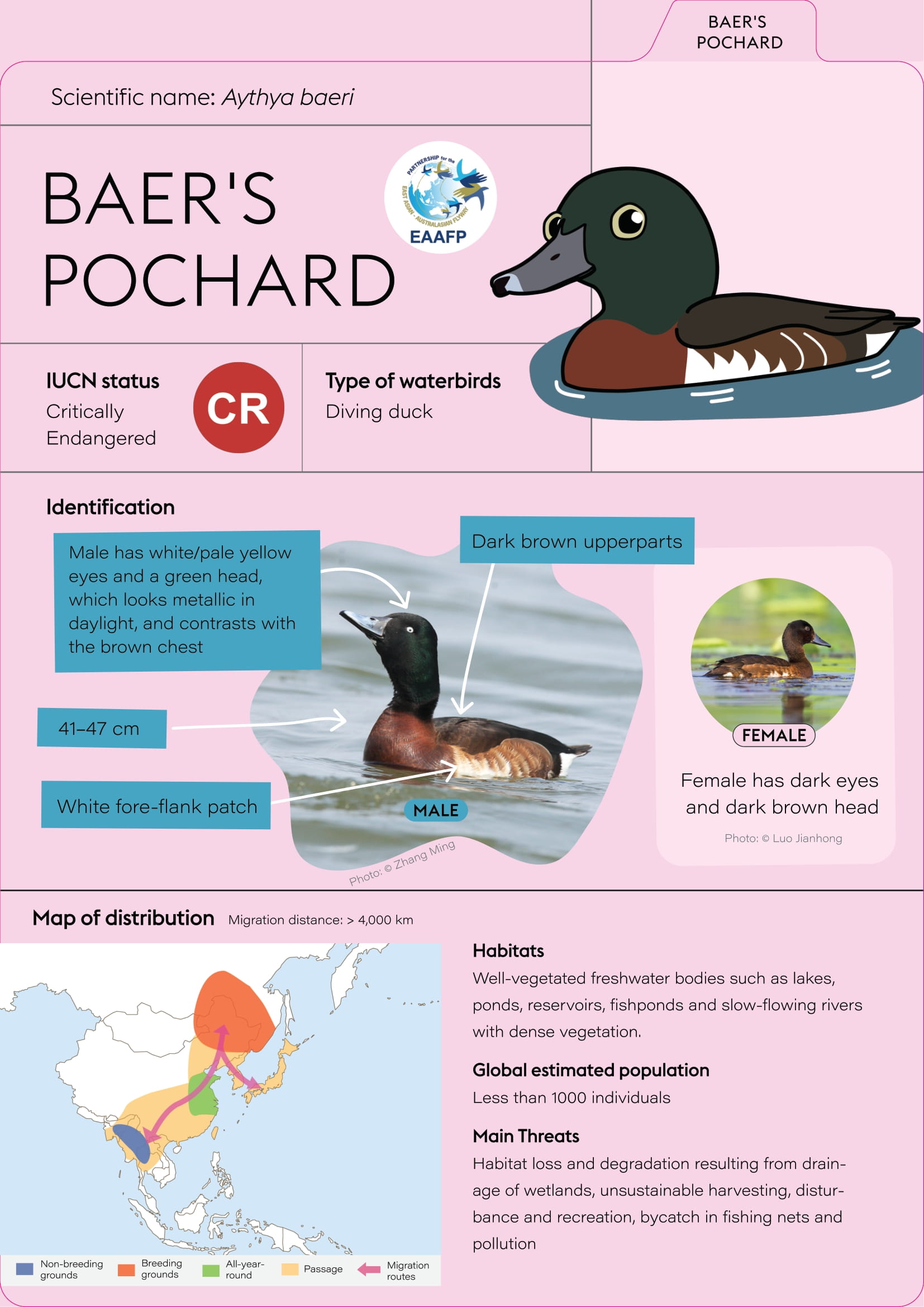 |
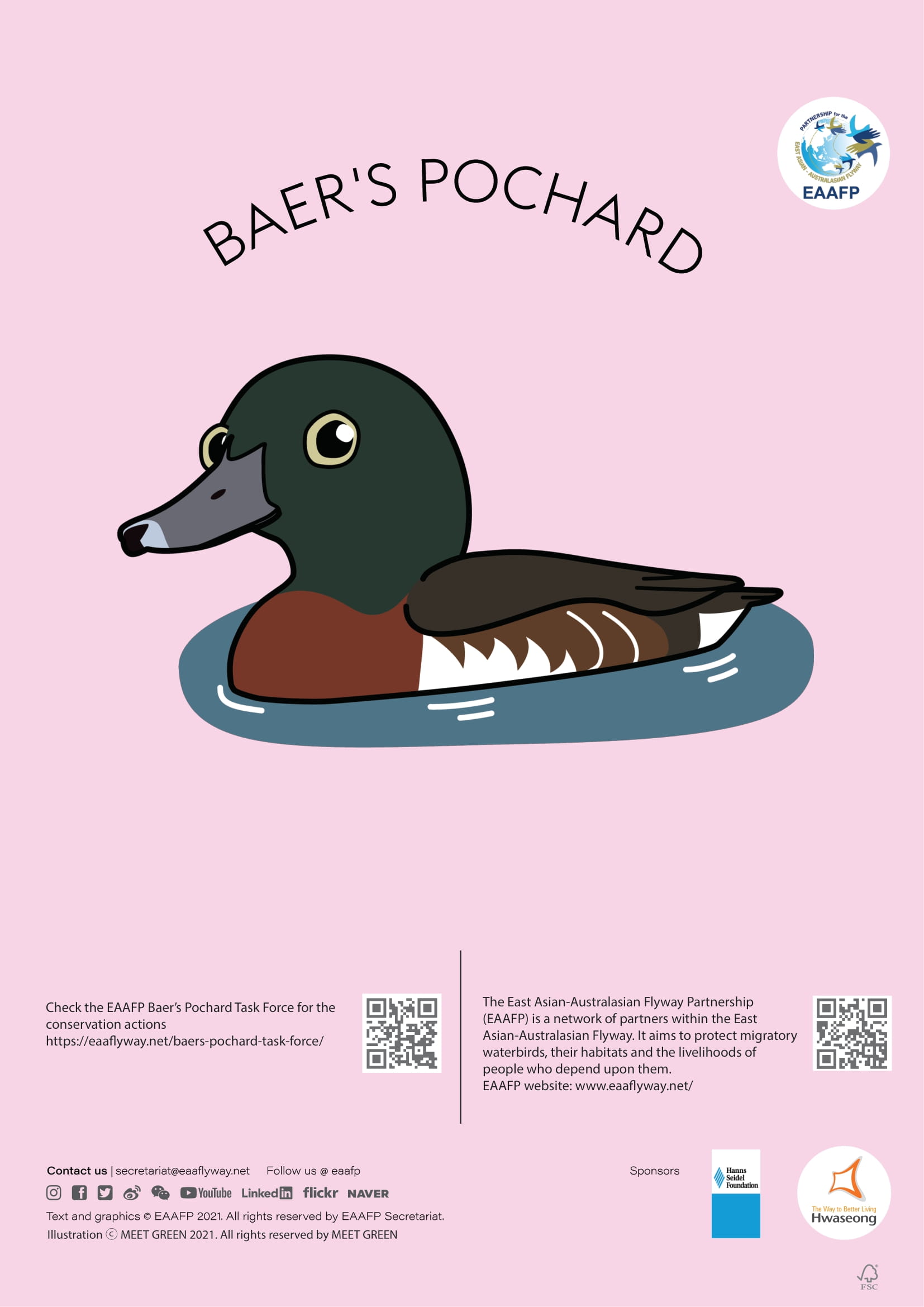 |
Click [here] to download the Baer’s Pochard Factsheet. All Copyrights Reserved.
- Important documents, reports and resources can be found in Baer’s Pochard Task Force: https://www.eaaflyway.net/baers-pochard-task-force/
- Previous EAAFP factsheet: https://eaaflyway.net/wp-content/uploads/2017/12/Baers-Pochard-FINAL.pdf
- IUCN: https://www.iucnredlist.org/species/22680384/154436811
- CMS Single Species Action Plan: https://www.cms.int/sites/default/files/publication/baers-pochard-ssap_complete_0.pdf
- Birds of the World: https://birdsoftheworld.org/bow/species/baepoc1/cur/introduction

